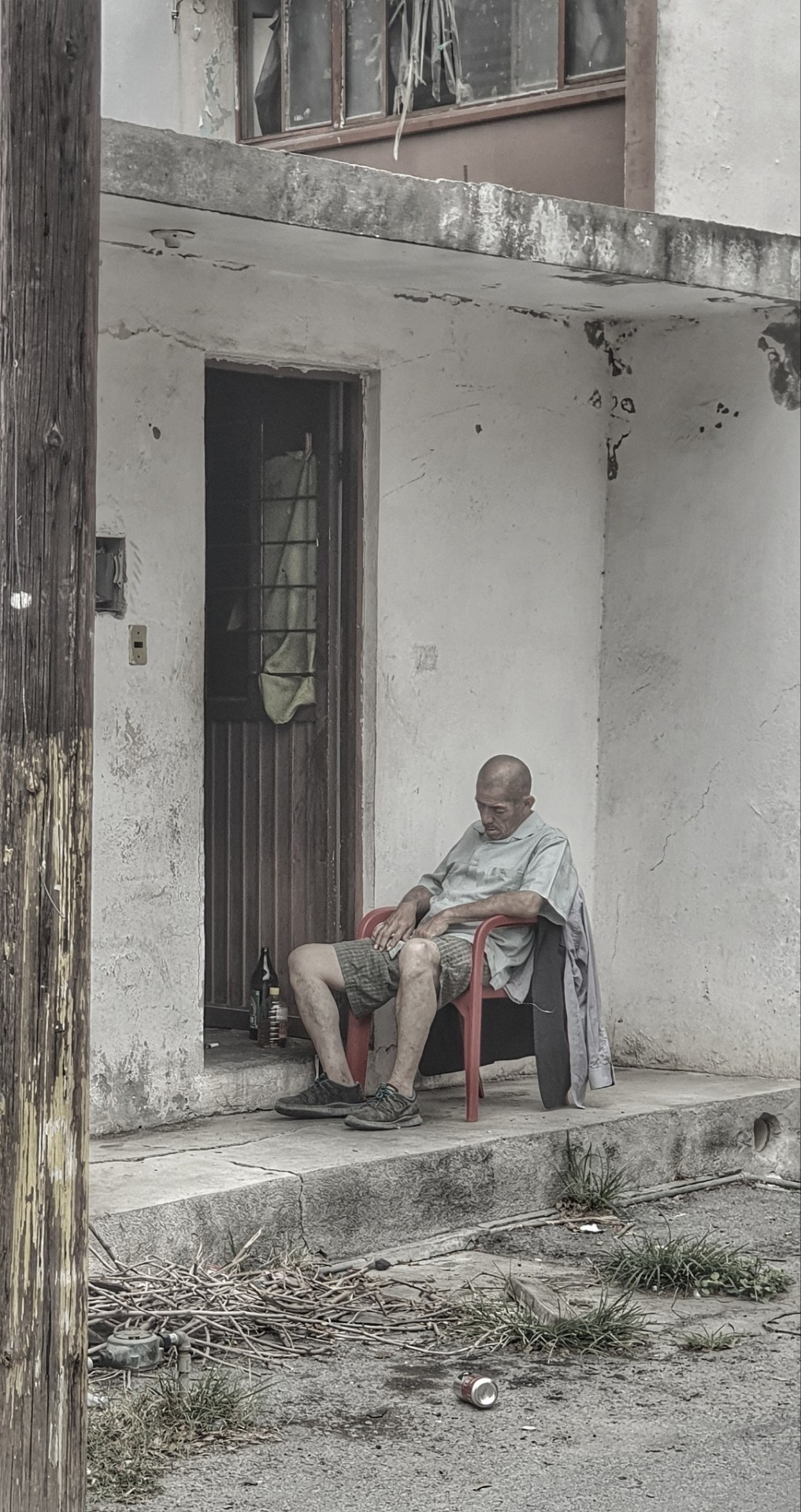#san nicolas
Text

The Naval Cathedral of St. Nicholas the Wonderworker in Kronstadt, RUSSIA
#naval#cathedral#catedral#st nicholas#san nicolas#kronstadt#kronshtadtsky#russia#rusia#europe#europa
267 notes
·
View notes
Text
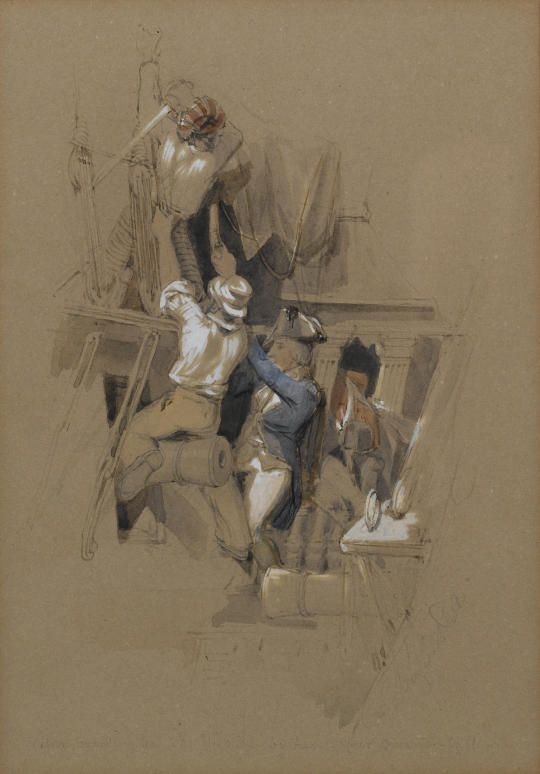
Vice Admiral (here he was just a Commodore) Nelson boarding the San Nicolas by her upper quarter-gallery, by Clarkson Stanfield (1793-1867)
74 notes
·
View notes
Text
Cuando los renos se te ponen en huelga
121 notes
·
View notes
Photo
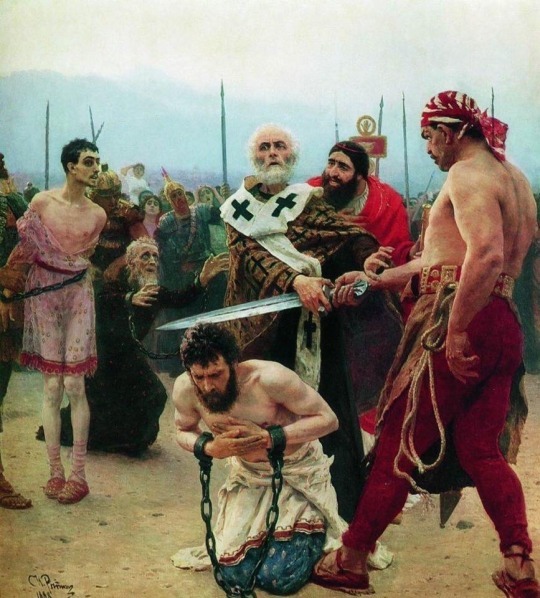
“San Nicolás de Myra salva a tres inocentes condenados a muerte” de Ilya Repin (1888)
28 notes
·
View notes
Photo
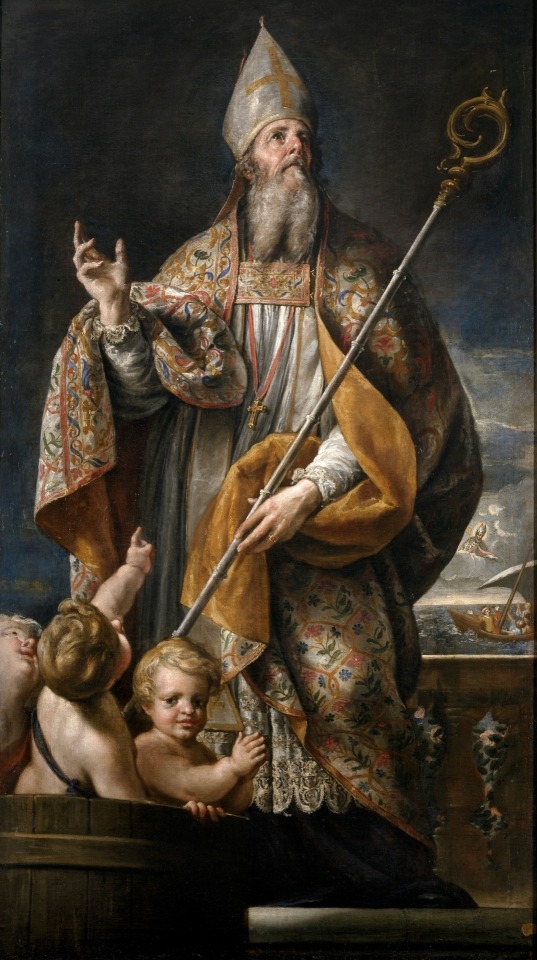
THE DESCRIPTION OF SAINT NICHOLAS
The Bishop Known as Santa Claus
Feast Day: December 6
"The giver of every good and perfect gift has called upon us to mimic God’s giving by grace through faith, and this is not for ourselves."
If you believe in Santa when you are a kid a long time ago, you believe in Santa. But this bishop loves to give cheer to the kids and puts names onto the Nice List, we are talking about Nicholas of Myra, aka Nicholas the Wonderworker. Nicholas is considered primarily as the patron saint of children, Nicholas is also invoked by sailors, merchants, bakers, travelers and pawnbrokers, and with Saint Andrew is honored as the co-patron of Russia.
Nicholas was traditionally born on March 15, 270 AD in Patara, Roman Empire (modern-day Gelemiş, Kaş, Antalya, Turkey) to a weathy family of Greek Christians. His parents were named Epiphanius and Johanna, but, according to others, they were named Theophanes and Nonna. Nicholas's uncle was the bishop of the city of Myra, also in Lycia. Recognizing his nephew's calling, Nicholas's uncle ordained him as a priest. After visiting the Holy Land, Nicholas returned to Myra. The bishop of Myra, who had succeeded Nicholas's uncle, had recently died, and the priests in the city had decided that the first priest to enter the church that morning would be made bishop. He went to the church to pray and was therefore proclaimed the new bishop. He is said to have been imprisoned and tortured during the Great Persecution under the Emperor Diocletian, but was released under the orders of the Emperor Constantine the Great.
One of the earliest attested stories of Saint Nicholas is one in which he saves three innocent men from execution. According to Michael the Archimandrite, three innocent men were condemned to death by the governor Eustathius. As they were about to be executed, Nicholas appeared, pushed the executioner's sword to the ground, released them from their chains, and angrily chastised a juror who had accepted a bribe. Michael tells another story in which the consul Ablabius accepted a bribe to put three famous generals to death, in spite of their actual innocence. Nicholas appeared to Constantine and Ablabius in dreams, informing Constantine of the truth and frightening Ablabius into releasing the generals, for fear of Hell.
Nicholas is said to have attended the First Council of Nicaea in 325 AD, where he is said to have been a staunch opponent of Arianism and devoted supporter of Trinitarianism, and one of the bishops who signed the Nicene Creed. His attendance at the Council of Nicaea is attested early by Theodore the Lector's list of attendees, which records him as the 151st attendee. However, he is conspicuously never mentioned by Athanasius of Alexandria, the foremost defender of Trinitarianism at the council, who knew all the notable bishops of the period, nor is he mentioned by the historian Eusebius, who was also present at the council. A later legend, first attested in the fourteenth century, over 1,000 years after Nicholas's death, holds that, during the Council of Nicaea, Nicholas lost his temper and slapped 'a certain Arian' across the face. On account of this, Constantine revoked Nicholas's miter and pallium.
Later versions of the legend embellish it, making the heretic Arius himself and having Nicholas punch him rather than merely slapping him with his open hand. In these versions of the story, Nicholas is also imprisoned, but Jesus Christ and the Virgin Mary appear to him in his cell. He tells them he is imprisoned 'for loving you' and they free him from his chains and restore his vestments.
There were other reputed miracles associated with him, but there is one. Unable to support his three daughters, who could not find husbands because of their poverty, he was determined to give them over to prostitution. Then Nicholas, under the cover of darkness, took a bag of gold and threw it at the open window of their house. Here was a dowry for the eldest girl, who was soon duly married. At intervals, Nicholas did the same second and the third daughter. At the last time, the father, who was on the watch, recognized his benefactor and overwhelmed him with gratitude.
Traditionally, Nicholas departed from the world on December 6, 343 AD in Myra, Roman Empire (modern-day Demre, Antalya, Turkey) at the age of 73. Ultimately, his kindness and generosity became known worldwide. His body was buried in the cathedral at Myra. It remained there until 1087, when seamen of Bari, an Italian coastal town, seized the relics of the saint and transferred them to their own city. Veneration for Nicholas had already spread throughout Europe as well as Asia, but this occurrence led to a renewal of devotion in the West. Countless miracles were attributed to the saint's intercession. His relics are still preserved in the church of San Nicola in Bari; an oily substance, known as Manna di S. Nicola, which is highly valued for its medicinal powers, is said to flow from them.
In the 19th Century, some Dutch Protestants contracted his name into 'Santa Claus', and made him the jolly and popular bringer of Christmas gifts. His red suit trimmed with white fur originated in the bishop's miter and cape. His association with reindeer from the North Pole, and the climbing down of chimneys to leave presents under the Christmas tree, were popularized by some Americans writers. Santa Claus symbolizes the true meaning of Christmas, that of love and generosity for all the poor of the world. Many countries and locations honor St. Nicholas as patron: Greece, Russia, the Kingdom of Naples, Sicily, Lorraine, and many cities in Italy, Germany, Austria, and Belgium.
#random stuff#catholic#catholic saints#saint nicholas#nicholas of myra#nicholas of bari#nicholas the wonderworker#san nicolas#santa claus
16 notes
·
View notes
Photo
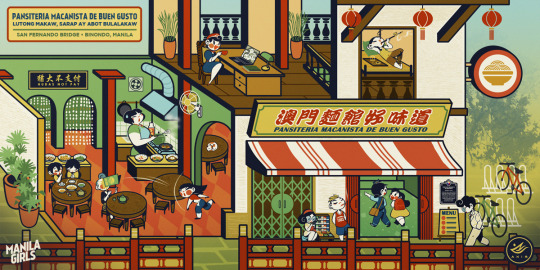
Been obsessing the 19th century noodle house, "Pansiteria de Macanista y Buen Gusto" since a personal encounter of the structure during the Binondo - San Nicolas tour back in summer of 2019.The establishment roughly translates as "Tasty Macanese Noodle House".
According to historical archives, the three-story commercial accessoria is owned by Don Serverino R. Alberto in 1880. The floor plan showcases the commercial divisions in its design by the Chinese-Filipino community. The former establishment was also mentioned in the 25th chapter of "El Filibusterismo", the second novel of Jose Rizal.
Re-imagined illustration above (for personal amusement) is a study of the first and second floor of what could have been a possible adaptive reuse of the building while retaining the panciteria brand and giving reverence of its past.
To know more about the pansiteria and the rest of the heritage sites, read more on this article.
Enjoy!
#jose rizal#binondo#manila#philippines#san nicolas#pancit#panciteria#macanese#cuisine#chinese filipino#chinoy#filipino#architecture#illustration#visual development#visdev#art#background design#restaurant
37 notes
·
View notes
Photo
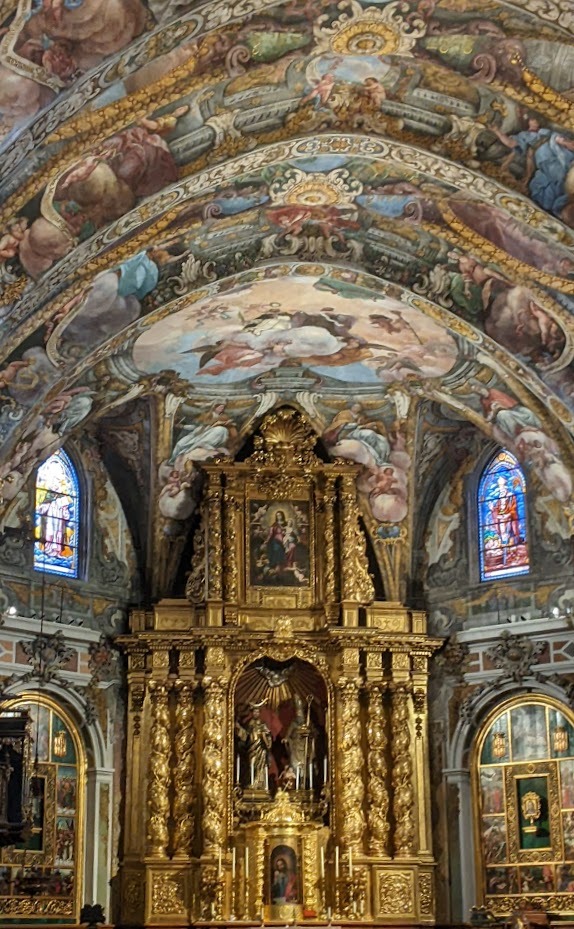
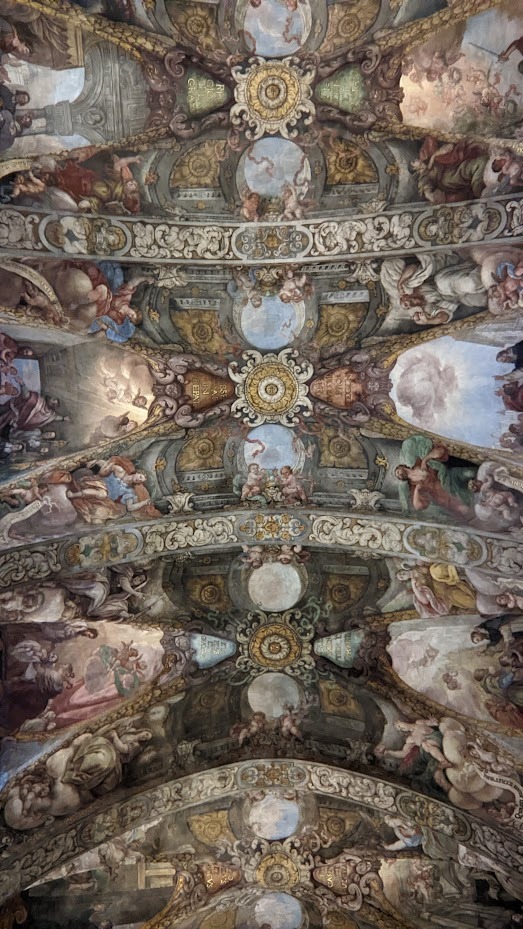
Valencia’s San Nicolas Church is a gothic church with a baroque interior. The ceiling has been compared to that of the Sistine Chapel.
3 notes
·
View notes
Text
living in quezon city for many years and not having much reason to visit manila, i was taken aback by the "skyline" of tondo, binondo, santa cruz, and quiapo. the many skyscrapers that now dominate the cityscape left me wondering about heritage configurations, whatever’s left of it, in that part of the old city.
0 notes
Text

Saint Nicholas Church in Kyiv, UKRAINE
89 notes
·
View notes
Text
Argentina: Consejo Federal AFA - Torneo Federal "C" 2018 - Región Pampeana - Subregión Norte - Zona 6
Argentina: Consejo Federal AFA – Torneo Federal “C” 2018 – Región Pampeana – Subregión Norte – Zona 6
https://josecarluccio.blogspot.com/2023/01/argentina-consejo-federal-afa-torneo.html

View On WordPress
#2018#afa#argentina#consejo federal#futbol#provincia de buenos aires#regatas san nicolas#region pampeana#san nicolas#subregion norte#torneo federal c#zona 6
0 notes
Text
En Oriente lo llaman Nicolás de Mira, por la ciudad donde estuvo de obispo, pero en Occidente se le llama Nicolás de Bari, porque cuando los musulmanes conquistaron Anatolia, un grupo de cristianos sacó de allí en secreto las reliquias del santo y se las llevó a la ciudad de Bari, en Italia. En esa ciudad se le adjudicaron tan admirables milagros al rezarle que su culto llegó a ser sumamente popular en toda Europa. Es patrono de Rusia, de Grecia y de Turquía. En Roma ya en el año 550 había construido un templo en su honor.
Su nombre es notable también fuera del mundo cristiano porque su figura ha dado origen al personaje de Santa Claus (del alemán Sankt Niklaus), conocido también como Papá Noel.
San Josemaría Escrivá de Balaguer le nombró santo intercesor del Opus Dei 6 de diciembre de 1934.

1 note
·
View note
Text








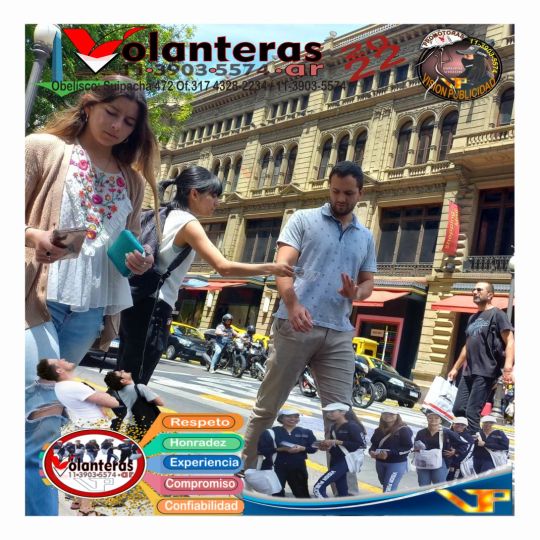







Repartimos para #persiccoar #volantera 👯♀️ #volantero 👬 #noviembre2022
Somos Grupovision 👉🥇nestor 👴 🌎Repartodevolantes com ar WhatsApp: 🤳11-3903-5574
Oficinas Obelisco Suipacha 472 of 317
📨hola@visionpublicidad com.ar
instagram: @nestorvisionpublicidad
#repartodevolantes
#repartodefolletos
#deliverys 🚚 #acambiode #canjes #intercambios #barter
.
#heladeria #buenosaires #cucuruchos #megusta #disfrutar #persicco #dulcedeleche
0 notes
Text
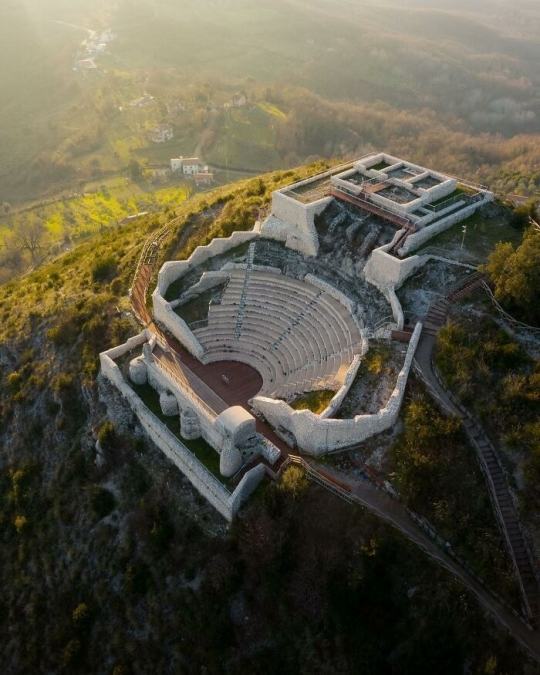
The Temple-Theater of San Nicola, an ancient Roman theater located in the municipality of Pietravairano (CE), in Campania.
300 notes
·
View notes
Photo

Teatro Romano di Pietravairano,
Temple-theater complex discovered at beginning of 2000s in Monte San Nicola, in Pietravairano of Caserta province; Italy.
Lying at 410m high in Sannio area, dates back to late Roman Republican period, 2nd-1st Century BC.
@ Luigidicriscio
#art#photography#drone photography#temple#theatre#roman#monte san nicola#caserta#italy#pietravairano#style#history#luigidicriscio#surreal
554 notes
·
View notes
